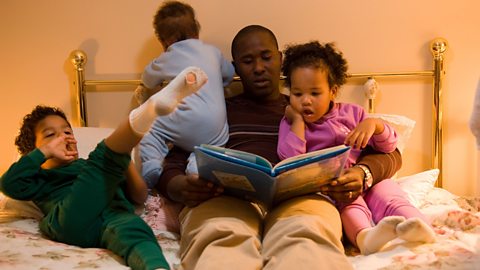The idea of тАШbaby-proofingтАЩ тАУ making a safe environment for your little one at home тАУ can feel very overwhelming to a parent. Where do you begin? And how far do you take it?
To help you find a level of precaution that youтАЩre comfortable with, we spoke to health visitor Kerry Bennett from Better Start Bradford. We also asked our for some of their thoughts and top tips around baby-proofingтАж
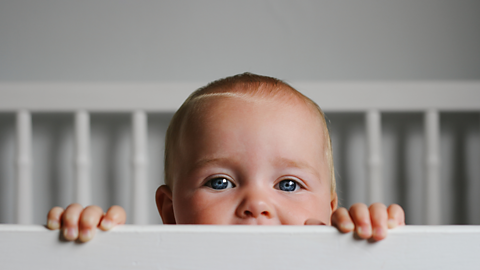
Safety vs exploration
One of the many balancing acts each of us must find in parenthood is around risk. Ensuring your child is тАШsafeтАЩ, while allowing them to have relative freedom and discover more about the world around them. This balance depends on your childтАЩs needs, their age, their environment, and ultimately, your own preferences.
тАЬYour house has got to look like a home, it canтАЩt be an empty box. If itтАЩs like that, weтАЩre not teaching our child how to navigate life when theyтАЩre outside of the home,тАЭ Kerry explains.
тАЬSo yes, make it safe, but thereтАЩs got to be an element of curiosity, learning and understanding consequences as well. We talk about locks and gates, especially when they start to toddle тАУ itтАЩs about finding a balance between limiting the available space but also allowing them to have opportunities for curiosity.тАЭ
Allowing your child to take risks during play also has its benefits.
Things to look out for
Some household hazards are non-negotiable when it comes to safety and will require a little thought and preparation. Kerry suggests a few to get you started.
Cleaning products and bleaches
Laundry tabs, toilet cleaner, bleaches тАУ many of these products have child-safety lids and locks to prevent little hands from gaining access to the dangerous products inside, but Kerry says we shouldnтАЩt be relying on these mechanisms and leaving things to chance.
тАЬGet them up high or out of reach,тАЭ she says. тАЬOr you can invest in a kid-proof lock for the cupboard, because that stops fingers being trapped as well.тАЭ
As weтАЩll cover later, itтАЩs worth considering how appealing some of these cleaning products look to children тАУ colourful liquids that might suggest sweet flavours!
Windows, balconies, stairs and blind cords
Stairs, windows and outdoor areas, like balconies, are important to consider, of course, because of the risk of a fall.
Kerry explains: тАЬClimbing is great fun, isnтАЩt it? We encourage children to climb at parks and they might do the same at home, so think about the furniture around windows тАУ does that make the window accessible? Is there a lock on the window? Is it easy to open?тАЭ
тАЬFamilies that live in high-rise flats might have balconies тАУ there has to be a gate on the door and check that little ones canтАЩt squeeze themselves through railings.тАЭ
that you continue to use stair gates at the top and bottom of stairs until your child is at least two years old, when you might start to teach them how to climb the stairs. This depends on their ability, of course, and you may want to leave gates up a little longer.
Kerry also highlights the suffocation dangers of blind and curtain cords around windows.
тАЬMake sure that theyтАЩre double tied up out of reach [when not in use].тАЭ
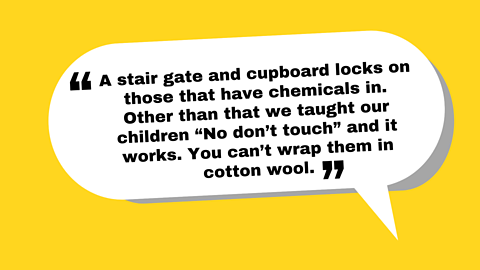
Choking hazards
One major way babies and toddlers learn about new objects is by putting them in their mouths, so itтАЩs really important to make sure that anything they can reach is something youтАЩd be happy with them having a chew on.
At this early stage, toys need to be big enough that thereтАЩs no risk that theyтАЩll be swallowed. But, Kerry asks, what if an older sibling has smaller toys that are often left out? These are a risk too.
тАЬCan you get a tray to put your older child's toys in and lift them up high if your younger baby is starting to crawl and explore?тАЭ
At this critical stage, itтАЩs also worth thinking about smaller household objects, like coins, or objects that might cause harm like small batteries for toys. Can these be reached or accessed?
And in terms of suffocation risks, carrier bags shouldnтАЩt be anywhere near babies, but nappy bags can also prove hazardous, Kerry says.
тАЬWhen youтАЩre changing them, they can grab and get their hands on things quite easily.тАЭ
Cots
Kerry recognises that bumpers and matching cushions for cots look great in the shop, but тАЬcots should be clear of everythingтАЭ.
тАЬThere should just be a clear space for your child to sleep.тАЭ
Hot drinks
Babies and toddlers love to grab anything and everything, so make sure that teas and coffees are placed out of reach.
This is equally true for visits to other peopleтАЩs houses тАУ do they have a low coffee table? This may require a little thought and planning.
Trips and falls
This one is especially important if youтАЩre still carrying your baby around the house. Kerry says make sure that doorways, halls and pathways through rooms are as clear of clutter as possible. Think about anything that might cause you to trip up.
If youтАЩre carrying your baby in a carrier or car seat, тАЬput [them] on the floor тАУ the floor is best, if possibleтАЭ. You might feel inclined to leave your baby up on the side or a table for a few minutes, but even if theyтАЩre properly secured the carrier or seat might fall.
E-cigarettes
If you use an e-cigarette, be mindful when leaving it on to charge that your child canтАЩt reach it. Keep them behind a closed door in a room where your child canтАЩt get into, if possible.
Would it look exciting to a baby?
ItтАЩs surprising how many hazards, things that young children shouldnтАЩt be touching at all, seem to look so appealing тАУ bright colours, attractive packaging, even mascots!
E-cigarettes are one example, theyтАЩre an interesting shape and often colourful. Toilet cleaning tabs are another.
тАЬWith gel tabs that you hang over the side of the toilet, which lots of people use, kids can get to the toilets and put their hands in very easily. Something brightly coloured, something to grab that's covered in water, they want to put it in their mouth,тАЭ Kerry explains.
Can you keep them away from the toilet, or should you switch products? тАЬThatтАЩs the sort of thing we need to think about when they start crawling тАУ be one step ahead of them.тАЭ
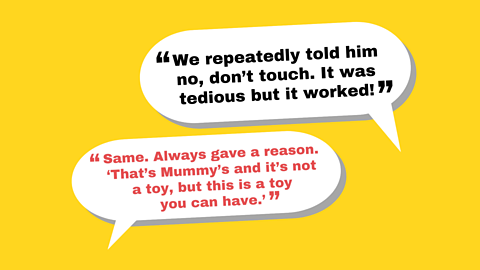
How to help your child stay safe
Model behaviour
As in many aspects of life, toddlers and young children look to their parents to help them make sense of things. This is true for language learning, itтАЩs also true for safety.
Kerry explains that you can model consequences so your child can understand hazards for themselves.
тАЬIf youтАЩre with your baby next to the radiator on the floor, you could touch it and say, тАШOuch, thatтАЩs hot!тАЩ It's explaining it in age-appropriate language.тАЭ
You could do the same thing for a cup of tea before it cools down.
Explain why something is off limits
As well as modelling consequences, you can also try to explain this to your child тАУ just like the parents say they do in the comment above.
тАЬEven though we think maybe children are a little bit too young to understand the rationale, itтАЩs really important,тАЭ Kerry says.
тАЬWe're engaging in that conversation, aren't we? I would always be encouraging to give the rationale to your child.тАЭ
You might explain, тАШI lock these bottles away because they can be dangerous for children. This is just for Mummy and other adults to use.тАЩ
Stay safe away from home
тАШBaby-proofingтАЩ in an environment you have relative control over is one thing, but Kerry says parents need to stay vigilant when visiting friends and relatives and staying in hotels or guesthouses on holiday.
тАЬAlways be mindful of when that environment changes as well. Try not to be caught off guard.тАЭ
Perhaps youтАЩre staying in a hotel with a balcony, something youтАЩve not had to deal with before. Or your friend might have older children, so doesnтАЩt worry about using stair gates like you do.
Have a chat with youтАЩre the person whose house your visiting, or the hotel and guestroom, then think about items you might need to bring with you, or the changes you need to make to keep your child safe (but again, allow them to be curious within reason!).
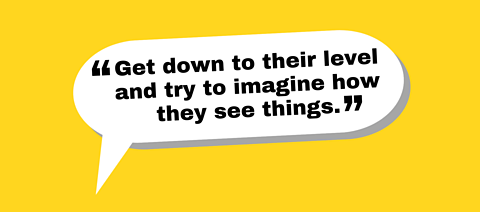
Be one step ahead
The most important part of тАШbaby-proofingтАЩ is staying one step ahead of your child and that involves a little mind-reading. After all, as Kerry says, тАЬyou know your child best.тАЭ
Knowing their personality, their fears, or perhaps their lack of fear, can help you to anticipate any risks and strike that perfect balance of precaution and freedom.
тАЬWe all know a child who sees an open door and they run for it. Whereas others might be hiding behind Mummy or DaddyтАЩs legs. Look at the environment through their eyes.тАЭ

In case you missed it
How can you help get children ready for starting school?
Helen Stroudley, Early Years Consultant at the charity Peeple shares her tips on getting children ready to start primary school.
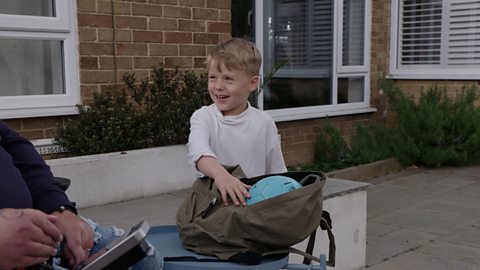
11 inspiring reasons to visit your library
There's much more to do than reading books, especially for parents!
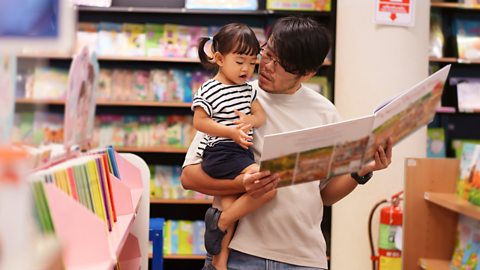
Tips for a calmer bedtime routine
Vicki Dawson from The Sleep Charity helps explain some simple ways to establish a good bedtime routine with kids.
